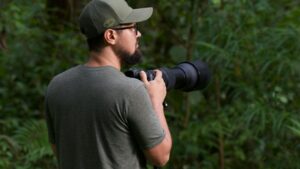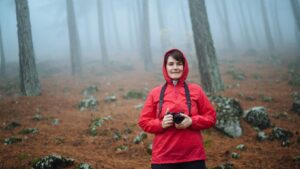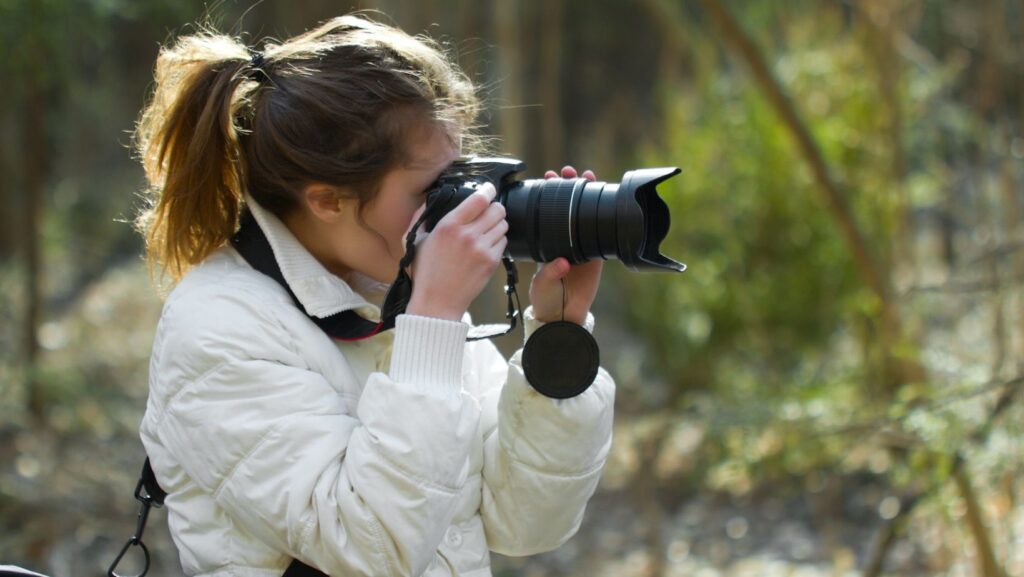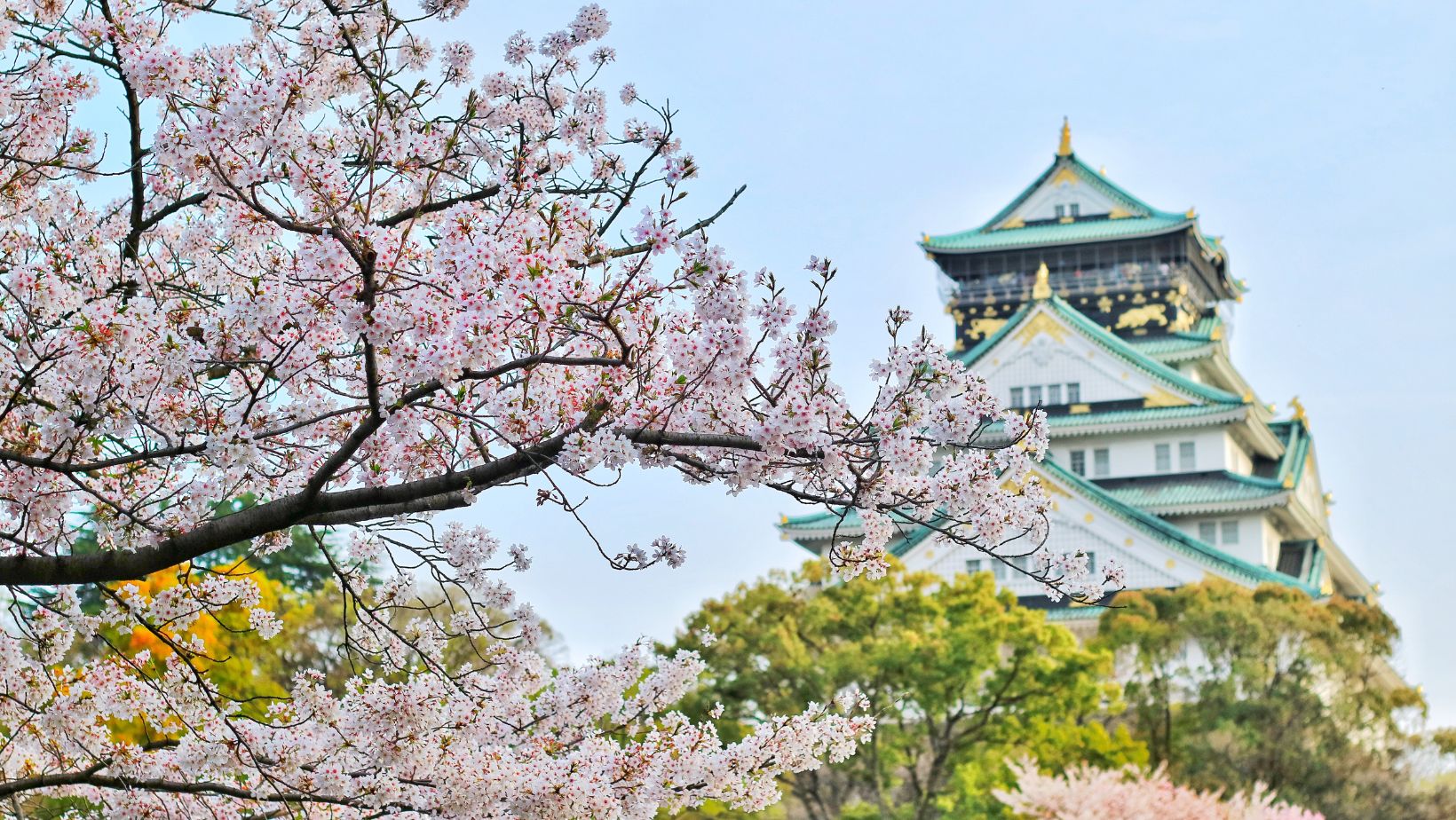Immersing oneself in the verdant embrace of a forest, camera in hand, can be an exhilarating experience. The world of forest landscape photography opens up a realm where nature’s quiet beauty meets the lens, creating a harmonious symphony of light, color, and texture. It’s an art that captures the heart of the wilderness and breathes life into the stillness of a photograph. If you want to further personalize your photographic journey, Adobe Express custom PFP maker offers tools to create unique profile pictures that reflect your passion for nature and photography.
Venturing into the forest, you’ll find yourself in a playground for your creativity. The dappled sunlight filtering through the canopy, the intricate patterns of foliage, and the captivating wildlife all provide endless opportunities for stunning images. But it’s not just about the visuals. Forest landscape photography is also about the journey, the exploration, and the stories each snapshot can tell.
Forest Landscape Photography
Key Challenges in Forest Photography
Getting impressive shots in forest landscape photography presents several challenges. The consistent change in lighting conditions test  photographers’ abilities. Deep in the forest, light often gets blocked by trees, creating pockets of dark and light, difficult to capture with a single exposure.
photographers’ abilities. Deep in the forest, light often gets blocked by trees, creating pockets of dark and light, difficult to capture with a single exposure.
Unpredictable wildlife encounters make for exciting photo opportunities but also require quick reflexes and knowledge about animal behavior. Photographers can end up missing shots due to wildlife moving too quickly, or out of respect for animals’ habitats.
Lastly, forests themselves can be complex and chaotic. A forest’s beauty lies in its untamed nature; however, it can be challenging to isolate a clear subject or create a balanced composition amidst the clutter. It’s less about getting ‘that one shot’, and more about learning to see the forest in a new, artistic way.
Despite these challenges though, forest landscape photography continues to enchant photographers with its endless opportunities for creativity, reminding them that the challenge is part of the journey.
Composition Techniques in the Forest
Striking the perfect balance in forest landscape photography mandates familiarity with numerous composition techniques. By finessing these methods, photographers can accentuate the inherent drama and beauty that forest scenes offer.
Reading the Light and Shadow Play
Light, it casts the critical context for a photograph. In a forest setting, managing the interplay between light and shadow becomes an art itself. Early morning or late afternoon sun, known in the industry as “golden hours,” provides a warm glow that enhances colors and casts long, intricate shadows. However, overcast conditions display their own charm, softening the light distribution and creating images with subtler tones and textures. Photographers anticipate these optimal lighting conditions, harmonizing with nature’s tempo to capture breathtaking visual narratives.
textures. Photographers anticipate these optimal lighting conditions, harmonizing with nature’s tempo to capture breathtaking visual narratives.
Realizing the potential of sunlight streaming through a forest canopy, casting dashes of light and shadow, adds depth and dimension. An example: Photographers may skillfully employ their understanding of contrasting illumination—a principle referred to as chiaroscuro—to give their compositions an ethereal, dreamlike quality.
Working with Elements of Nature
Achieving mastery in forest landscape photography takes more than understanding light. It encompasses a keen sense of observation for forest elements. The vast array of natural structures and materials in a woodland scene—such as towering trees, sprawling roots, leaf-littered grounds, tranquil streams—offers endless possibilities for composing images.
A photographer could focus closer to earth, foregrounding elusive flowering plants and fungi, perhaps using a wide-angle lens to emphasize the contrast between their tiny forms and the colossal trees overhead. Conversely, one may opt to photograph the tangled roots of a gnarled old tree, turning them into almost abstract naturally occurring sculptures. It’s all about how efficiently a photographer identifies and applies elements available at their perusal.
Each technique used wields the power to turn the forest into a veritable fairyland, spinning a visual narrative that inspires awe and respect for nature’s expanse and intricacy.
Ethical Considerations in Forest Photography
Navigating the world of forest landscape photography isn’t just about capturing stunning visuals. It’s also about respecting the environment and its  inhabitants. Photographers must remember that they’re visitors in these natural spaces. They should strive to leave no trace, disturbing the environment as little as possible. Being mindful of wildlife encounters is equally important. It’s crucial to maintain a safe distance and not disrupt their natural behaviors for the sake of a shot.
inhabitants. Photographers must remember that they’re visitors in these natural spaces. They should strive to leave no trace, disturbing the environment as little as possible. Being mindful of wildlife encounters is equally important. It’s crucial to maintain a safe distance and not disrupt their natural behaviors for the sake of a shot.
The beauty of forest landscape photography lies in its ability to inspire awe for nature’s intricacy. By balancing creativity with ethical considerations, photographers can create compelling compositions that not only capture the enchantment of the forest but also promote respect and preservation of these invaluable ecosystems.



